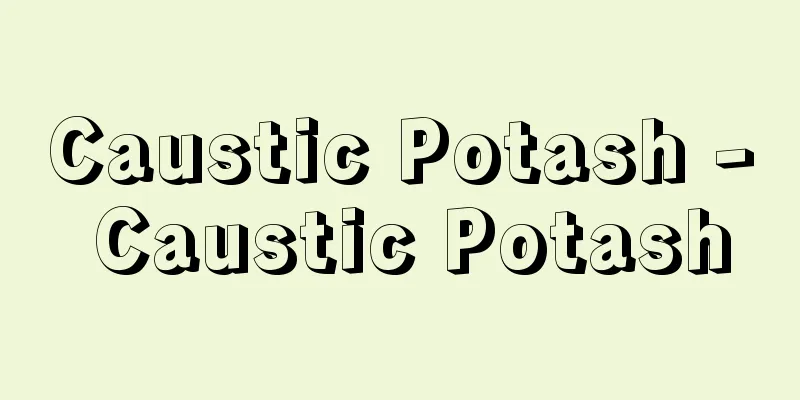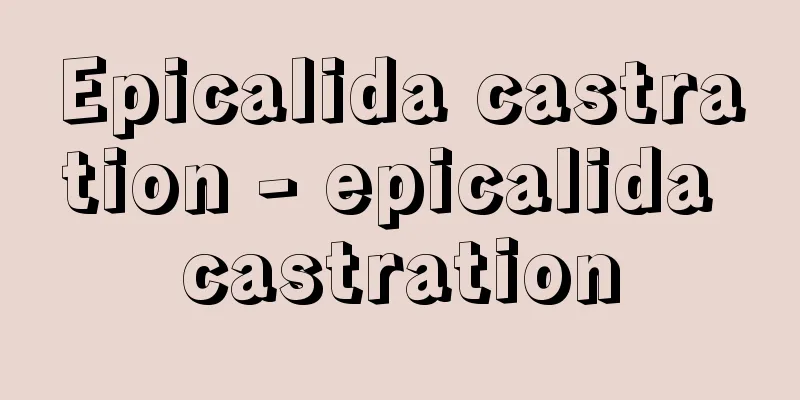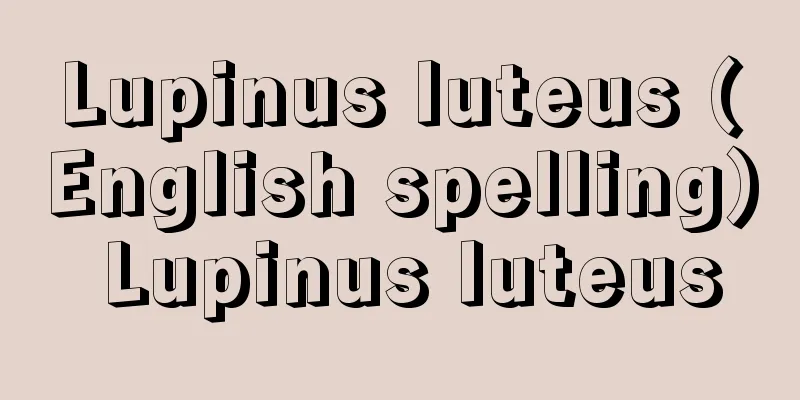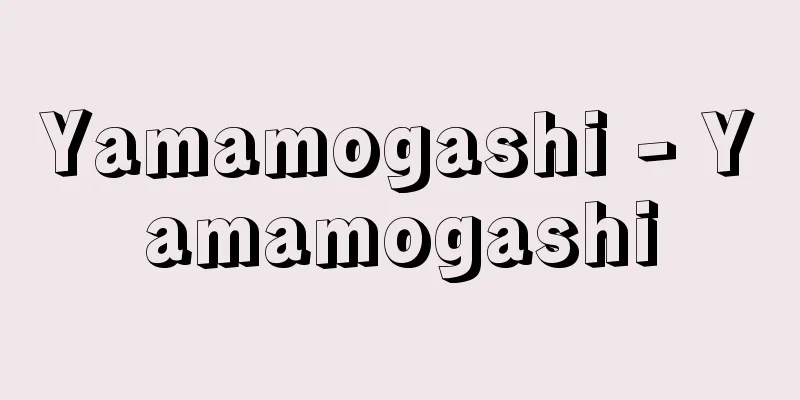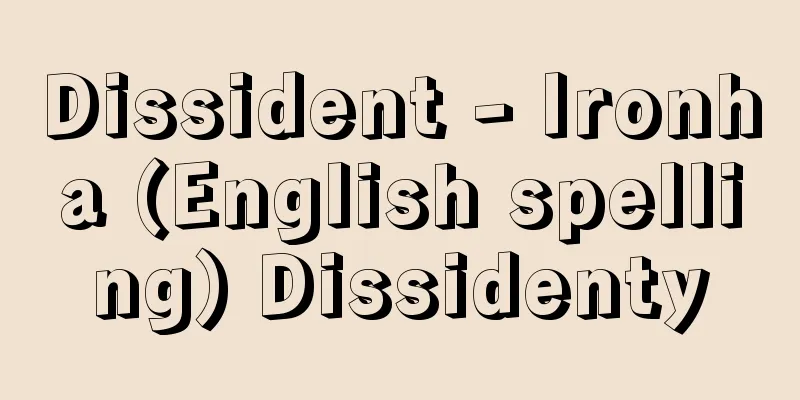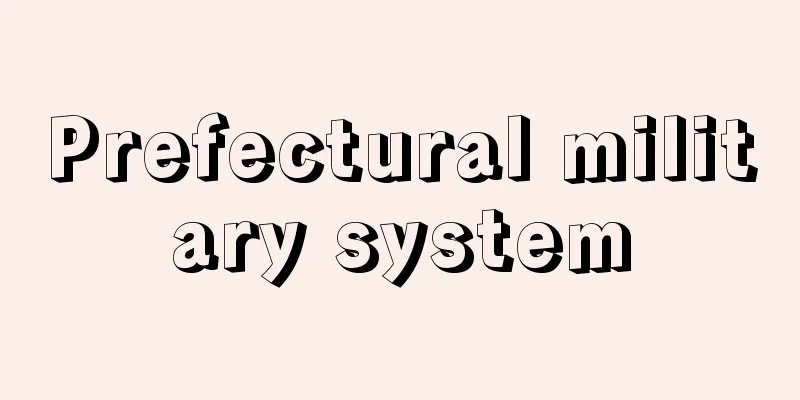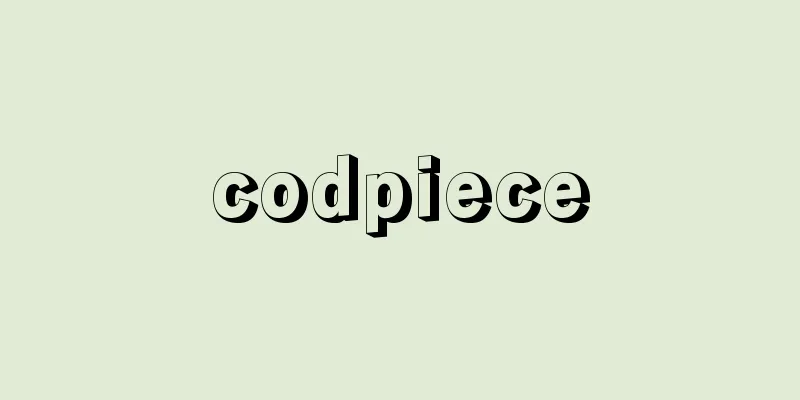Illusion (English), Ta¨uschung (German)
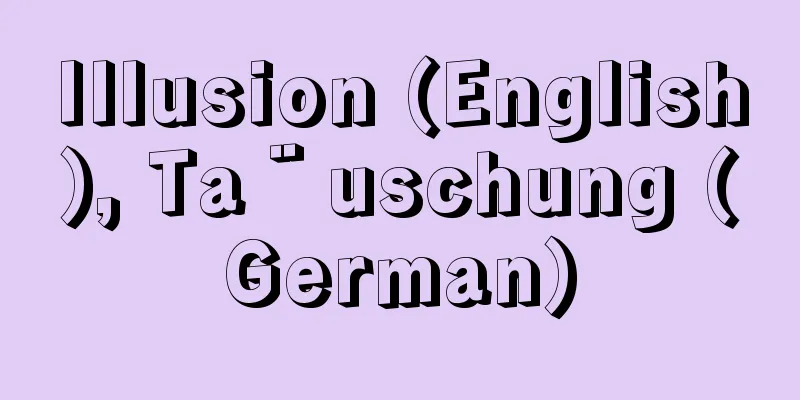
|
An illusion refers to the perception or conscious experience that is significantly different from the physical reality. [Significance of research into illusions] There are many causes of illusions, but this section deals with illusions that originate from sensation and perception. Illusions of this type include the phenomenon in which physically small objects are perceived as large, and vice versa. There is also the phenomenon in which sounds that do not physically exist are perceived as existing. Or there is the phenomenon in which brightness or color appears to change. These types of illusion phenomena are highly unexpected in themselves, and have attracted the interest of many people. At the same time, they are considered to provide useful insights for the psychological and physiological exploration of the information processing mechanisms of the sensory systems, including vision, hearing, and touch, and many observations and experiments have been conducted on them. The majority of illusion research focuses on visual illusions. Research into optical illusions has been ongoing since the late 19th century, with many Japanese researchers also participating. In addition, the Vision Sciences Society (VSS), the largest international conference on vision research, holds a session on optical illusions every year, with new optical illusions being presented one after another. In addition to vision, auditory illusions and tactile illusions are also studied, as well as multisensory illusions that do not involve a single sensory system and illusions related to one's own body. The unexpectedness, rationality, and suggestiveness of illusions are also seen in the classic Müller-Lyer illusion (Figure 1). This is an illusion in which the length of a line segment appears to change due to the presence of arrow feathers (short inclined line segments) at both ends. In general, lines appear shorter in inward-facing figures and longer in outward-facing figures. The unexpectedness of this illusion lies in the fact that a quantity such as the length of a line segment, which is simple, essential for recognizing the outside world, and should be perceived stably, changes simply because of the presence of arrow feathers. This illusion has such an irrational aspect at first glance, but also reflects the rationality of its mechanism. Hypotheses have been proposed regarding such rationality, such as that it originates from depth perception to perceive the three-dimensional world from two-dimensional figures, or that it originates from statistics of natural images, and attempts have been made to verify and disprove them. Furthermore, these illusionary figures are highly suggestive, and research has been accumulated from a variety of perspectives, not just from the perspective of visual perception, but also from the perspective of repetitive learning, development in infants and young children, species comparison in animals, and real-world applications such as the perceived change in body shape due to clothing. [Optical illusion, visual illusion] The majority of illusions reported so far are optical illusions. Research into optical illusions began in the late 19th century, when many geometric illusions were created and published, and has progressed in step with the history of experimental psychology. In addition to geometric illusions, light-dark illusions and color illusions have also been studied for a long time. When geometric illusions were first created, figures were often drawn with a crow's-eye on Kent paper, so most illusions used static figures. However, as personal computers became more common, the types of figures that could be created became more diverse, and many motion illusions began to be created. In addition, figures such as subjective contours, ambiguous figures, and impossible objects (paradoxical figures) do not necessarily fit the definition of being different from physical entities, but are often considered to be included in optical illusion figures. Currently, there are many websites dealing with optical illusions, and by searching for the word "optical illusion" or its corresponding English word, you can easily see many optical illusion figures and also manipulate such figures. In addition, on page 238, Figures 1 and 2 are given as representative examples of geometric illusions, and on page 239, Figure 3 is given as representative examples of other optical illusions. [Geometrical illusion] A geometric illusion is a phenomenon in which the arrangement of figures makes the size of the figures, such as their length or area, appear different from the real thing, or the angle, direction, or curvature appear different from the real thing. Research into this subject has a long history, and dozens to over a hundred types of illusory figures have been discovered so far. Several hypotheses have been proposed as to why geometric illusions occur, including that they are a side effect of the aforementioned depth perception, and that they are based on the interaction of the orientation detection mechanisms in the early visual system, and attempts have been made to verify them, but a unified explanatory theory has yet to be constructed. [Light and Dark Illusions, Shadow Illusions, and Color Illusions] Light and dark illusions are seen in figures in which the light and dark of the surface of an object appears different from the actual object. Many light and dark illusions have been linked to brightness contrasts and the lateral inhibitory function of the nervous system that generates contrasts. Examples include the famous Mach band, a classic illusion, as well as the similar Chevreul illusion and Craik-O'Brien-Cornsweet illusion. Another illusion closely linked to the lateral inhibitory function for luminance distribution seen in the early stages of the visual system is the Hermann grid illusion, in which luminance appears to change depending on the surrounding objects. A representative modern light and dark illusion is the checker shadow illusion created by Adelson, EH. This optical illusion is a phenomenon in which, when a physically dark object is presented in a shadow, the darkness is considered to be due to the shadow, and the object appears much brighter than the physical brightness presented. This phenomenon shows that the sensory system has a rational function that is advantageous for environmental adaptation by eliminating accidental factors such as the darkness caused by the shadow and appropriately perceiving the inherent brightness of the object. This optical illusion also shows that the shadow has a significant effect on the perception of brightness on the surface of an object, but considering that perceiving the shadow here is not a simple or easy task for the sensory system in the first place, and is extremely difficult for congenitally blind patients who have opened their eyes beyond the critical period, for example, it is unnatural to interpret it as a simple processing process having an influence on something else. Therefore, this optical illusion is highly suggestive in the sense that it cleverly shows the mystery that must be solved to elucidate the mechanism of light and dark perception. Illusions that occur because light and dark, and the shadows they produce, are also reported to be related to depth and motion. The crater illusion is a shadow illusion that reflects the empirical rule that in a normal environment, the light source is located above, and the hollow-mask illusion and hollow-face illusion are shadow illusions that reflect this empirical rule as well as the fact that a face is a convex figure. In addition, there is the cast shadow motion illusion, which reflects the fact that a shadow moves in accordance with the movement of an object. It has been reported that the trajectory of the shadow's motion affects the perception of the trajectory of the object's motion, and that when a shadow moves, the still figure that produces the shadow also appears to move. In color illusions, the phenomenon in which the perceived hue shifts toward the opposing color as a result of simultaneous contrast or afterimages has long been studied. In addition, a phenomenon called neon color spreading, in which a local color is perceived as spreading as if it is bleeding, has been reported, and this phenomenon has been used in experiments to investigate the perceptual properties of visible surfaces, such as surface completion and transparency. [Motion illusion] A motion illusion known as the motion aftereffect (waterfall illusion), in which a moving object appears to move in the opposite direction after being viewed for a while, has long been used in experiments to investigate the mechanism of motion perception. In addition, the apparent motion seen when multiple images containing figures in different positions are presented in succession is often not included in the category of motion illusions, but the reversed phi motion, in which a random-dot kinematogram, a type of apparent motion, is presented with its luminance polarity reversed and the figure moves in the opposite direction, can be considered as a motion illusion. This reversed phi motion is useful for investigating the properties of the first-order motion of the motion perception mechanism, and a similar phenomenon is seen in random-dot stereograms and glass patterns. In addition, a motion illusion called motion-induced blindness, in which a light point that has been presented for a long time is perceived to disappear when the background is moving, is useful for investigating the properties of visual consciousness and the properties of the complementation of visible surfaces. Motion illusions include phenomena in which still figures appear to move, such as Akiyoshi Kitaoka's rotating snakes, the Ouchi illusion, and the jitter illusion, and many of these have been studied in relation to minute eye movements. [Celestial illusion] Unlike illusions caused by still figures drawn on paper or moving figures projected on a computer monitor, celestial illusions are illusions that occur in a huge visual space. A typical example is the moon illusion, in which the moon appears much larger when it is near the horizon than when it is in the sky. This phenomenon has been studied since the Greek era as representing the geometric structure of the sky. In modern times, experiments have been conducted linking it to the anisotropy of visual space, contrast with surrounding objects, eye movements, etc., but a conclusive theory of explanation has yet to be reached. [Subjective contour, illusory contour] The perception of contours is useful for perceiving the shape of an object. The visual system has an edge detection function that detects areas where physical properties such as luminance, hue, binocular disparity, and direction of motion change abruptly, which allows the detection of contours. In contrast, subjective contours refer to an optical illusion in which contours are seen even in areas where physical properties do not change. A representative example of subjective contours is the Kanizsa triangle, which has been the subject of numerous studies because of its association with various properties such as depth, visible surface, occlusion, complementation, and brightness. Another subjective contour is the abutting grating, an adjacent stripe pattern with the endpoints of parallel lines lined up. Electrophysiological experiments using this pattern were the first to show that neurons in the visual cortex respond to subjective contours, providing an opportunity to link perceptual content with physiological responses. [Ambiguous figures] Ambiguous figures, such as Rubin's goblet, are figures that can be interpreted in multiple ways, and are a type of trompe-l'œil, an optical illusion whose interpretation changes with figure-ground reversal. Optical illusions also include impossible objects (paradoxical figures), which will be described later, and as all of these are highly unexpected and contain suggestions regarding the mechanisms of the visual system, they can be considered a type of optical illusion. Widely known examples of ambiguous figures include the wife and mother-in-law and the Necker cube. The Necker cube has also contributed to the development of artificial intelligence research as an example of reversible information representation. [Impossible object (paradoxical figure)] Generally, a 3D object can be restored from a 2D image, which is a projected floor plan. However, among the 2D figures that at first glance appear to be floor plans of 3D objects, there are some in which the 3D object to be restored cannot physically exist. Such combinations of 3D objects and 2D figures are called impossible objects, impossible figures, or paradoxical figures. Representative examples are the 2D figures Penrose triangle and Penrose tribar, which have no local inconsistencies and do not give an unnatural feeling, but cannot be matched by 3D objects. As for these impossible objects, a series of paintings by printmaker Escher, MC, such as "Waterfall" and "Ascending and Descending (Infinite Stairs)," who is a specialist in optical illusions, are widely known. In image engineering and artificial intelligence, the problem of impossible objects is studied as a heuristic solution to the uncertainty inherent in the problem of inverse optics (the problem of restoring the 3D structure of the outside world from a 2D retinal image). A representative study on the reconstruction of 3D objects from 2D line drawings is the Origami World theory by Kanade Takeo. In addition, Sugihara Kokichi presented an algorithm to determine whether a 3D object can be reconstructed from the vertex coordinates of a 2D figure and the incidence matrix (which vertices are connected to each other by line segments), and mathematically proved its correctness. Although there are fewer examples than optical illusions, many auditory illusions have been created and systematically studied. There are some auditory illusions that are unique to the auditory sense, such as pitch illusions and hearing speech sounds, as well as visual illusions, such as completion. A typical example of a pitch illusion is the phenomenon called the missing fundamental. This is a phenomenon in which the auditory system restores a non-existent fundamental frequency when hearing a sound that contains many harmonics. This phenomenon is useful for investigating the relationship between the frequency components, which are the physical characteristics of sound, and pitch perception, and many psychological and physiological experiments have been conducted on it. Another example of an optical illusion of pitch is Shepard RN's infinite scale or Shepard tone. This is a phenomenon in which the pitch is perceived as rising (or falling) indefinitely by presenting a complex sound containing multiple frequencies with the distribution of frequency components shifted in sequence. Speech illusions often manifest themselves as the robustness of hearing degraded speech, and it has been reported that speech can be heard with sufficient clarity for speech communication even if the sound stream is divided and filled with noise, if the sound is divided into time periods and time-reversed, or if the frequency band is severely restricted. This robustness is useful for elucidating the repair and compensation functions of the mechanisms of the auditory system, and is also useful when keeping the capacity of voice communication such as telephone low, and when designing cochlear implants to restore the hearing function of the hearing impaired. [Tactile illusion, haptic illusion] Research into tactile illusions, which are tactile illusions, is even less common than into auditory illusions, and the research is fragmented. The few systematic examples are studies that present geometric optical illusions to the sense of touch, but the experimental results are not always consistent. However, with recent innovations in information and communications technology, the presentation technology for tactile displays has improved, and tactile illusions are a field where future developments are expected. In particular, multisensory illusions caused by the interaction between vision and touch, and physical illusions induced by touch are important. A classic example of a tactile illusion is the Aristotle illusion, a phenomenon in which if you cross your index and middle fingers and touch a stick near the tips of the two fingers, you feel as if there are two sticks instead of one. This can be interpreted as a misidentification of the contact point as a result of touching in a way that is not normally experienced. Regarding hot and cold sensations and pain, there is the thermal grill illusion, a phenomenon in which the simultaneous presentation of hot and cold sensations at close range produces a pain sensation. It was reported at the end of the 19th century as a pain sensation felt when touching a grill consisting of alternating slightly warm and slightly cold sticks, and psychological and physiological experiments have been conducted to investigate the mechanism of pain sensation and to help with clinical pain relief. Further phenomena discovered with advances in tactile presentation methods include the velvet illusion, in which a coarse mesh like that of a tennis racket is felt when held between both hands and moved back and forth, giving a soft sensation to the touch, and the fishbone tactile illusion, in which stripes about 2 mm wide are presented to the touch, and when the fingers are moved across the stripes, a physically flat surface is perceived as being concave. [Multisensory illusion] Although events in the real environment may be perceived using a single sense, in many cases they are perceived simultaneously using multiple senses. Therefore, many studies have been conducted on multisensory perception, and the differences in properties between the senses have been clarified. Many studies on multisensory issues have focused on how information from multiple sensory systems is integrated. Multisensory illusions have been reported as a phenomenon in which, when multiple sensory systems are stimulated, one sensory system takes over and affects the other sensory systems. These multisensory characteristics are important in virtual reality, so research on them is progressing rapidly with the advancement of information and communication technology. Here, we will discuss audiovisual and visual-tactile illusions. A well-known example of an audiovisual illusion is the McGurk effect. This is a phenomenon in which phoneme perception is influenced not only by the auditory information of speech but also by the visual information of mouth movements. Typically, when the sound /ba/ and an image of a mouth pronouncing /ga/ are presented simultaneously, the sound /da/, which is neither of these two, is heard. This phenomenon has been repeatedly examined in terms of the type of phoneme, the type of language, the native language, the language proficiency, the presentation position, etc. This is a visual dominance phenomenon in which vision influences hearing, but the opposite auditory dominance phenomenon in which hearing influences vision has also been reported. For example, when a moving image of two objects approaching and receding is presented, a polysemic perception occurs in which the objects appear to cross or repel each other. However, it has been reported that when a short sound is presented when the objects come into contact, hearing influences vision, and the proportion of repulsions increases dramatically. It has also been reported that when short flashes of light are presented visually in short bursts and short sounds are presented auditorily at the same time, the number of times the flashes are presented is significantly affected by the number of times the sounds are presented. One visual-tactile illusion that has long been known is the Charpentier illusion. This is a phenomenon in which, when lifting objects of the same weight, the larger the object, the lighter it feels. This is a visually dominant illusion in which vision influences touch (force sensation). Conversely, a tactilely dominant illusion has been reported in which, when a Necker cube is made three-dimensionally out of wire and presented visually to a single eye, it is perceived as a two-dimensional ambiguous figure, but when a real three-dimensional cube is presented to the eye at the same time, the tactile information influences vision. [Body illusion] Self-localization of the body is an essential requirement for daily life, and is often thought to be highly robust and not easily broken down. In contrast, patients who have had an arm or leg amputated may experience an illusion known as a phantom limb, where a non-existent body part is perceived as if it exists. This illusion is often accompanied by phantom limb pain, and is therefore a clinical problem. A phenomenon known for a long time as a bodily illusion in healthy individuals is vection (visually induced self-motion sensation) or the train illusion. This is an illusion in which the subject feels that it is the subject's own body moving, not the outside world, when there are motion components such as translation, expansion, or contraction over a wide area of the visual field. In addition, when vection is felt, the spatiotemporal characteristics of vision and hearing also change, so illusions occur not only in the orientation of the body but also in the perception of the outside world. In recent years, a phenomenon called the rubber hand illusion has been reported. This is a phenomenon in which if tactile stimuli are applied simultaneously and continuously to a rubber hand (a fake hand such as a decorative prosthetic hand) and one's own hand, and the subject continues to look at only the rubber hand without looking at his or her own hand, the tactile sensation comes from the rubber hand, not from one's own hand. In addition, if tactile stimuli are applied to both one's own hand and the rubber hand while looking at both, both are felt as one's own hand, resulting in the illusion of a "third hand." Numerous psychological and physiological experiments have been conducted on this breakdown of body ownership. In addition, by using a virtual reality device that combines a head-mounted display and a camera, it is possible to create a situation in which one's own body can be observed from the outside, and in this case, one can experience an illusion equivalent to an out-of-body experience, in which the position of one's body is actually externalized. Experiments on this illusion have been conducted using physiological indices such as skin conductance response, as well as measuring subjective evaluations of the sense of ownership of body parts. →Perception of movement →Vision →Somatic sensation →Hearing →Cutaneous sensation [Kita Shinichi] "> Figure 3 Other optical illusions Latest Sources Psychology Encyclopedia Latest Psychology Encyclopedia About Information |
|
錯覚とは,物理的実体と著しく異なる知覚内容や意識経験を得ることを指す。 【錯覚の研究意義】 錯覚の原因には多くのものがあるが,本項では感覚・知覚に由来する錯覚について取り扱う。この種の錯覚には,物理的には小さな物体が大きく知覚される現象や,その逆の現象がある。また,物理的には存在しない音が存在するように知覚される現象がある。あるいは,明るさや色が変化して見える現象がある。こういった錯覚現象は,現象そのものに意外性が大きく,多くの人の興味を引いてきた。それとともに,視覚,聴覚,触覚をはじめとする感覚系の情報処理メカニズムを心理学的・生理学的に探究するに当たって有用な知見が得られるとみなされており,観察や実験が数多く行なわれてきている。 錯覚研究の大多数は,視覚の錯覚である錯視を対象としている。錯視研究は19世紀後半から現在まで継続的に行なわれており,日本の研究者も数多く参画している。また,視覚研究において最大規模の国際会議であるVision Sciences Society(VSS)では,錯視に関するセッションが毎年開催されており,新たな錯視が次々と発表されている。視覚以外では,聴覚の錯覚である錯聴や触覚の錯覚である錯触も研究され,さらに単一の感覚系ではない多感覚の錯覚や,自己の身体に関する錯覚も研究されている。 錯覚の意外性,合理性,示唆性は,古典的な錯視図形であるミュラー・リヤー錯視Müller-Lyer illusionにも表われている(図1)。これは線分の長さが両端の矢羽(短い傾斜線分)により変化して見えるという錯視であり,一般に線分は,内向図形では短く見え,外向図形においては長く見える。この錯視の意外性は,線分の長さのような,単純で,外界認識には不可欠で安定して知覚されるべき量が,単に矢羽が付いているだけで変化してしまう点にある。この錯視図形は,このような一見すると非合理的な面を有するとともに,メカニズムの合理性を反映するという面も有する。そのような合理性については,2次元図形から3次元の世界を知覚するための奥行き知覚に由来するという仮説や,自然画像の統計量に由来するという仮説が提唱され,検証や反証が試みられている。また,この錯視図形は示唆性にも富み,視知覚という観点だけでなく,繰り返しによる学習,乳幼児を対象とした発達,動物を対象とした種の比較,衣服による体型の知覚変容のような実社会への応用など,多様な観点からの研究が積み重ねられてきている。 【錯視optical illusion,visual illusion】 これまでに報告されている錯覚の大多数は,錯視についてのものである。錯視研究は,19世紀後半に幾何学的錯視が数多く作成され発表されたことに端を発しており,実験心理学の歴史と歩調をそろえて進展してきた。また幾何学的錯視だけでなく,明暗の錯視や色の錯視も古くから研究されてきている。幾何学的錯視が作成されていた当初は,図形はケント紙に烏口で描かれることが多かったので,錯視のほとんどは静止図形を用いていた。しかし,パーソナルコンピュータが一般化した結果,作成可能な図形が多様化し,運動錯視が数多く作成されるようになった。また,主観的輪郭,多義図形,不可能物体(逆理図形)のような図形は,物理的実体とは異なるという定義には必ずしも当てはまらないが,錯視図形に含めて考えることが多い。現在では,錯視を扱ったウェブサイトは数多くあり,「錯視」ということばや対応する英語で検索すると,数多くの錯視図形を容易に見ることができ,またそのような図形を操作することもできる。なお,238ページに図1と図2として幾何学的錯視,239ページに図3としてその他の錯視の代表例を挙げる。 【幾何学的錯視geometrical illusion】 幾何学的錯視は,図形の布置により,長さや面積のような図形の大きさが実物と異なって見える図形や,角度・方位・曲率が実物と異なって見える現象を指す。その研究は歴史が長く,これまでに数十種類から百種類以上の錯視図形が発見されている。幾何学的錯視の成立要因には,前述の奥行き知覚の副作用であるという仮説や,初期視覚系の方位検出機構の交互作用に基づく仮説が提唱され,検証も試みられているが,統一的な説明理論はいまだ構築されていない。 【明暗の錯視,陰影の錯視,色の錯視】 明暗の錯視(ライトネス錯視)は,物体表面の明暗が実物とは異なって見えるような図形において認められる。明暗の錯視には,明るさの対比や,対比を生成する神経系の側抑制機能との関連が指摘されているものが多く,古典的錯視として有名なマッハバンド(マッハの帯)Mach bandをはじめ,それと類似したシェブルール錯視Chevreul illusionやクレイク-オブライエン-コーンスウィート錯視Craik-O'Brien-Cornsweet illusion(あるいはクレイク-オブライエン錯視)がある。また,視覚系の初期段階に見られる輝度分布に対する側抑制機能に密接に結びついている錯視としては,周囲の物体により輝度が変化して見えるヘルマン格子錯視Hermann grid illusionがある。現代を代表する明暗の錯視には,エイデルソンAdelson,E.H.が作成したチェッカーシャドー錯視checker shadow illusionがある。この錯視は,物理的に暗い物体が陰影の中に呈示されるとき,その暗さは陰影に起因するものとみなされ,呈示される物理的な明暗よりもずっと明るく見えるという現象である。この現象は,感覚系が陰影による暗さのような偶発的な要因を取り除き,物体が本来もっている明暗を適切に知覚することにより,環境適応に有利な機能を果たしているという合理性をもつことを示している。またこの錯視は,物体表面の明暗知覚に陰影が大きく影響していることを示すが,ここで陰影を知覚することは感覚系にとってそもそも単純で容易な作業とはいえず,たとえば臨界期を超えて開眼した先天盲患者にはきわめて困難であることを考えると,単純な処理過程が他に影響したという解釈は不自然である。それゆえこの錯視現象は,明暗知覚のメカニズムを解明するために解かなければならない謎を巧妙に示すという意味で,示唆性が深い。 また,明暗や明暗がもたらす陰影が,奥行きや運動とも関連することから発生する錯視も報告されている。通常環境では,光源は上方にあるという経験則を反映した陰影の錯視としてクレーター錯視crater illusionがあり,その経験則に加え,顔は凸図形であるということを反映した陰影の錯視としてホロウマスク錯視hollow-mask illusion,hollow-face illusionがある。また,物体の運動に従って陰影も運動することを反映した錯視には,キャストシャドーによる運動錯視があり,陰影の運動軌道が物体の運動軌道の知覚に影響するという錯視や,陰影が運動するとその陰影をもたらす静止図形も運動して見えるという錯視が報告されている。 色の錯視には,同時対比や残像の結果,知覚される色相が反対色方向に移行する現象が古くから研究されている。また,ネオンカラー拡散neon color spreadingという局所的な色彩がにじむように広がって知覚される現象が報告されており,面の補完や透明視のような可視表面の知覚特性を調べるための実験に用いられている。 【運動錯視motion illusion】 運動錯視には,運動物体をしばらく見た後に逆方向の運動が見える現象である運動残効motion aftereffect(滝の錯視waterfall illusion)が古くから知られており,運動視メカニズムを調べるための実験に多く用いられている。また,位置が異なる図形を含む複数枚の画像を継時的に呈示したときに見える仮現運動は,運動錯視には含めないことが多いが,仮現運動の一種であるランダムドット・キネマトグラムを,輝度極性を反転して呈示したときに,図形の移動方向と逆向きの動きが見られるという逆ファイ運動reversed phi motionは,運動錯視に含めて考えることができる。この逆ファイ運動は,運動視メカニズムの1次運動の性質を調べるために有用であり,ランダムドット・ステレオグラムやグラス・パターンにおいても類似の現象が見られる。また,運動誘発盲motion-induced blindnessという運動錯視は,ずっと呈示されている光点が,背景が動いているときに消失して感じられるという現象で,視覚意識の性質や可視表面の補完の性質を調べるために有用である。運動錯視には,北岡明佳の蛇の回転錯視rotating snakes,オオウチ錯視Ouchi illusion,ジター錯視jitter illusionのように,静止図形が動いて見えるという現象もあり,多くは微細眼球運動と関係づけて研究されている。 【天体錯視celestial illusion】 紙に描かれた静止図形やコンピュータ・モニターに映し出された運動図形が生起させる錯視とは異なり,天体錯視は巨大な視空間における錯視である。代表例は,月が地平近くのときの方が天空のときよりもはるかに大きく見えるという月の錯視moon illusionである。この現象は天空の幾何学構造を表わすものとして,ギリシア時代から考究されてきた。また近現代では,視空間の異方性,周囲の物体との対比,眼球運動などと関連づけた実験が行なわれてきたが,決定的な説明理論にはいまだ到達していない。 【主観的輪郭subjective contour,illusory contour】 物体形状の知覚には輪郭の知覚が有用である。視覚系には,輝度をはじめ,色相,両眼視差,運動方向などの物理特性が急峻に変化する部分を検出する,エッジ検出の機能が備わっている結果,輪郭が検出できる。これに対し主観的輪郭は,物理特性が変化しない部分にも輪郭が見えるという錯視現象を指す。主観的輪郭の代表例はカニッツァの三角形Kanizsa triangleであり,この図形は奥行き,可視表面,遮蔽,補完,明暗などさまざまな性質と関連することから,数多くの研究が行なわれてきた。また主観的輪郭には,平行線の端点が並んでいる隣接縞図形abutting gratingがあり,この図形を用いた電気生理学実験により,視覚皮質の神経細胞が主観的輪郭に反応することが初めて示され,知覚内容と生理学的反応が結びつく契機となった。 【多義図形ambiguous figure】 ルビンの盃Rubin's goblet(ルビンの壺Rubin's vase)に代表される多義図形は,複数の解釈の可能性を有する図形であり,図地反転とともに解釈が変化するだまし絵trompe-l'œilの一種である。だまし絵には,後述する不可能物体(逆理図形)もあり,これらはいずれも意外性に富み,視覚系メカニズムに関する示唆を含んでいることから,錯視の一種とみなすことができる。多義図形としては,妻とその母wife and mother-in-lawやネッカーの立方体Necker cubeが広く知られている。ネッカーの立方体は,反転する情報表現の例として人工知能研究の発展に寄与したという面も有する。 【不可能物体impossible object(逆理図形paradoxical figure)】 一般に3次元物体は,投影した見取り図である2次元画像から復元することができる。しかし,一見したところでは3次元物体の見取り図になっているかのような2次元図形の中には,復元すべき3次元物体が物理的には存在することができないようなものがある。このような3次元物体と2次元図形の組み合わせを,不可能物体,不可能図形impossible figure,逆理図形とよぶ。代表例はペンローズの三角形Penrose triangle,Penrose tribarという2次元図形であり,局所的な部分に矛盾はなく不自然な感じは与えないが,3次元物体を対応させることはできない。これらの不可能物体としては,だまし絵を得意とする版画家エッシャーEscher,M.C.の「滝」や「上昇と下降(無限階段)」など一連の絵画が広く知られている。不可能物体の問題は,画像工学や人工知能では,逆光学inverse opticsの問題(2次元の網膜像から,外界の3次元構造を復元する問題)が内包する不定性をヒューリスティックheuristicにより解決することとして研究されている。線画から成る2次元図形からの3次元物体の復元についての代表的研究には,金出武雄によるオリガミ・ワールドの理論がある。また杉原厚吉は,2次元図形の頂点座標と接続行列(どの頂点とどの頂点が線分で結ばれているか)から3次元物体が復元できるか否かを判定するアルゴリズムを示し,その正しさを数理的に証明した。 【錯聴auditory illusion】 錯視に比べると例は少ないが,聴覚の錯覚である錯聴も数多く作成され,系統的な研究が行なわれている。錯聴には,ピッチ(音高)の錯聴や言語音の聴取のように聴覚特有の現象や,補完のように視覚と類似した現象が報告されている。 ピッチの錯聴の代表例は,ミッシング・ファンダメンタルmissing fundamentalという現象である。これは倍音が多く含まれる音を聞くとき,聴覚系が存在しない基本周波数を復元してしまう現象である。この現象は,音の物理的特性である周波数成分とピッチ知覚の関係を調べるために有用であり,心理学実験や生理学実験が数多く行なわれている。また,ピッチの錯聴のだまし絵とよぶべきものに,シェパードShepard R.N.の無限音階infinite scale,Shepard toneがある。これは,複数の周波数を含む複合音の周波数成分の分布を順にずらして呈示することにより,いつまでもピッチが上昇(ないし下降)して知覚される現象である。 言語音に関する錯聴は,劣化音声に対する聞こえ方の頑健性として現われることが多く,音の流れを分断してその間を雑音で埋めて聞かせても,時間幅を区切って時間を反転させて聞かせても,また周波数帯域を厳しく制限して聞かせても,言語コミュニケーションには十分な明瞭度で聴取できることが報告されている。このような頑健性は,聴覚系のメカニズムがもつ修復や補完の機能を解明するために有用であるとともに,電話などの音声通信の容量を低く抑えるときや,聴覚障害者の聴覚機能を回復するための人工内耳を設計するときに有用である。 【錯触tactile illusion,haptic illusion】 触覚の錯覚である錯触の研究は,錯聴よりもさらに例が少なく,研究も断片的である。系統的に行なわれている数少ない例は,幾何学的錯視を触覚呈示するというスタイルの研究であるが,実験結果は必ずしも一貫していない。しかし,近年の情報通信技術の革新により,触覚ディスプレイの呈示技術が向上してきており,錯触は今後の発展が望みうる分野である。とくに視覚と触覚の交互作用による多感覚の錯覚や,触覚が誘発する身体の錯覚は重要である。 錯触の古典的な例には,アリストテレスの錯覚Aristotle illusionという交差指の錯触があり,人差し指と中指を交差して2本の指の先端近くに棒で触れると,棒が1本ではなく2本であるかのように感じられるという現象である。これは,日常的に経験しない方法での触知の結果,接触部位を誤認したと解釈できる。また,温冷感覚と痛覚についてはサーマル・グリル錯触thermal grill illusionがあり,この現象は近い距離で温感と冷感を同時に呈示すると痛覚を生じるというものである。やや温かい棒とやや冷たい棒が交互に並んでいるグリルに触れたときに感じる痛覚として19世紀末に報告され,痛覚のメカニズムを調べるためや臨床的な除痛に役立たせるために,心理学実験や生理学実験が行なわれている。また,触覚呈示方法が進歩して発見された現象には,テニスラケットのような粗い網の目を両手ではさんで前後に動かすと柔らかな触感が得られるというベルベット錯触velvet illusionや,2㎜程度の幅の縞を触覚呈示し,縞を横切る方向に指を動かすと物理的には平らな面が窪んで感じられるというフィッシュボーン錯触fishbone tactile illusionがある。 【多感覚の錯覚multisensory illusion】 実環境の事象は,単一感覚で知覚していることもあるが,多くの場合は複数感覚で同時に知覚している。それゆえ多感覚での知覚についての研究が数多く行なわれてきており,感覚間の性質の違いが明らかにされてきている。多感覚の問題は,複数の感覚系からの情報がどのように統合されるかに関する研究が多い。多感覚の錯覚は,複数の感覚系に刺激を与えたとき,ある感覚系が優位に働き,他の感覚系に影響する現象として報告されている。これらの多感覚特性はバーチャルリアリティvirtual realityにおいて重要性が高いので,情報通信技術の進歩とともに研究が急速に進展している。ここでは視聴覚と視触覚の錯覚について述べる。 視聴覚の錯覚で著名な例には,マガーク効果McGurk effectがある。これは,音韻知覚が音声の聴覚情報だけでなく,口元の動きの視覚情報にも影響されるという現象であり,典型的には,/ba/という音声と/ga/を発音している口元の画像を同時に呈示すると,この二つのいずれでもない/da/という音声が聞こえるというものである。この現象は,音韻の種類,言語の種類,母語,言語の習熟度,呈示位置などに関して検討が重ねられている。これは視覚が聴覚に影響するという視覚優位の現象であるが,逆に聴覚が視覚に影響するという聴覚優位の現象も報告されている。たとえば,二つの物体が接近し離反する運動画像を呈示すると,それらの物体が交差するようにも反発するようにも見えるという多義知覚が生起するが,これらの物体が接するときに短い音を呈示すると,聴覚が視覚に影響し,反発する割合が劇的に増加するという現象が報告されている。また,フラッシュ光を小刻みに視覚呈示し,それと同時に短い音をやはり小刻みに聴覚呈示すると,フラッシュ光の呈示回数が音の呈示回数の影響を大きく受けるという現象も報告されている。 視触覚の錯覚で古くから知られているものには,シャルパンティエの錯覚Charpentier illusion(シャルパンティエ効果Charpentier effect)がある。これは,同じ重さの物を持ち上げるときに,視覚的に大きな物ほど軽く感じられるという現象である。これは視覚が触覚(力覚)に影響する視覚優位の錯覚である。逆に触覚優位の錯覚としては,ネッカーの立方体を針金で3次元的に作成し単眼に対し視覚呈示すると,2次元的な多義図形として知覚されるが,これと同時に実物の3次元立方体を触覚呈示すると,触覚情報が視覚に影響するという現象が報告されている。 【身体の錯覚body illusion】 自己身体の定位は日常生活を営むために必須の要件であり,頑健性が高く,容易には崩壊しないと考えられがちである。これに対し,腕や脚を切断した患者では,存在しない身体部位が存在するかのように感じられるという,幻肢phantom limb とよばれる錯覚が起き,多くの場合で幻肢痛を伴うので臨床的に問題となる。 健常者における身体の錯覚として古くから知られているものには,ベクションvection(視覚誘発性自己運動感覚)または列車の錯覚train illusionとよばれている現象がある。これは,視野内の広範囲に並進,拡大,縮小などの運動成分があるとき,外界ではなく自己身体が運動して感じられるという錯覚である。また,ベクションを感じているときには,視覚や聴覚の時空間特性も変化するので,身体定位だけでなく外界の知覚においても錯覚が起きる。また近年,ラバーハンド錯覚rubber hand illusionとよばれる現象が報告されている。これは,ラバーハンド(装飾義手のような偽の手)と自分の手に触刺激を同時かつ連続的に与え,そのとき自分の手は見ずにラバーハンドだけを見つづけると,触感覚は自分の手からではなくラバーハンドから感じるようになる現象である。また,自分の手とラバーハンドの両方を見た状態で両方に触刺激を与えると,両方とも自分の手のように感じられ,「第3の手」があるという錯覚が生じる。この身体部位所有感覚body ownershipの崩壊に対しては,数多くの心理学実験や生理学実験が行なわれている。 また,ヘッドマウントディスプレイとカメラを組み合わせたバーチャルリアリティ装置を用いると,自己身体を外部から観察する状況を構成でき,このとき身体の定位が実際に外在化するという,いわゆる幽体離脱に相当する錯覚が得られる。この錯覚に対しては,身体部位の所有感に対する主観的評価の計測とともに,皮膚伝導反応などの生理学的指標を用いた実験も行なわれている。 →運動の知覚 →視覚 →身体感覚 →聴覚 →皮膚感覚 〔喜多 伸一〕 "> 図3 その他の錯視 出典 最新 心理学事典最新 心理学事典について 情報 |
<<: General merchandise industry
Recommend
Red Badge of Valor
…Although his works were recognized by W.D. Howel...
Hagfish - Nutaunagi (English spelling) hag fish
A general term for fish in the Myxinidae family, ...
Collection of houses - Ienoshu
A personal collection of poems. Kashu (family anth...
Horváth, Ödön von
Born: December 9, 1901. Fiume [Died] June 1, 1938....
Acropora
…A coelenterate (cnidaria) of the family Acropora...
Fukurasuzume - Fukurasuzume
A moth belonging to the family Noctuidae in the o...
Tara [town] - Tara
A town in Fujitsu District, southern Saga Prefectu...
Lithops salicola (English spelling)
… [Hiroshi Yuasa]. … *Some of the terminology tha...
Educational Counseling - Educational Counseling
Advising the child or student on the best way to ...
Anthropoides paradisea (English spelling)
…[Hiroshi Aramata]. … *Some of the terminology th...
Gold and silver trade
… In medieval Japan, the gold-silver ratio was ab...
blue-crowned hanging parrot
...10 species are found in southern India and Sri...
Yoshiya Uemura
⇒ Yoshiya Kamimura Kichiya ⇒ Yoshiya Source: About...
Cerrado - Cerrado (English spelling)
Vegetation found in the savanna climate region of...
cinnamon bark
… Cinnamon ( C. verum J. Presl) is an evergreen t...

